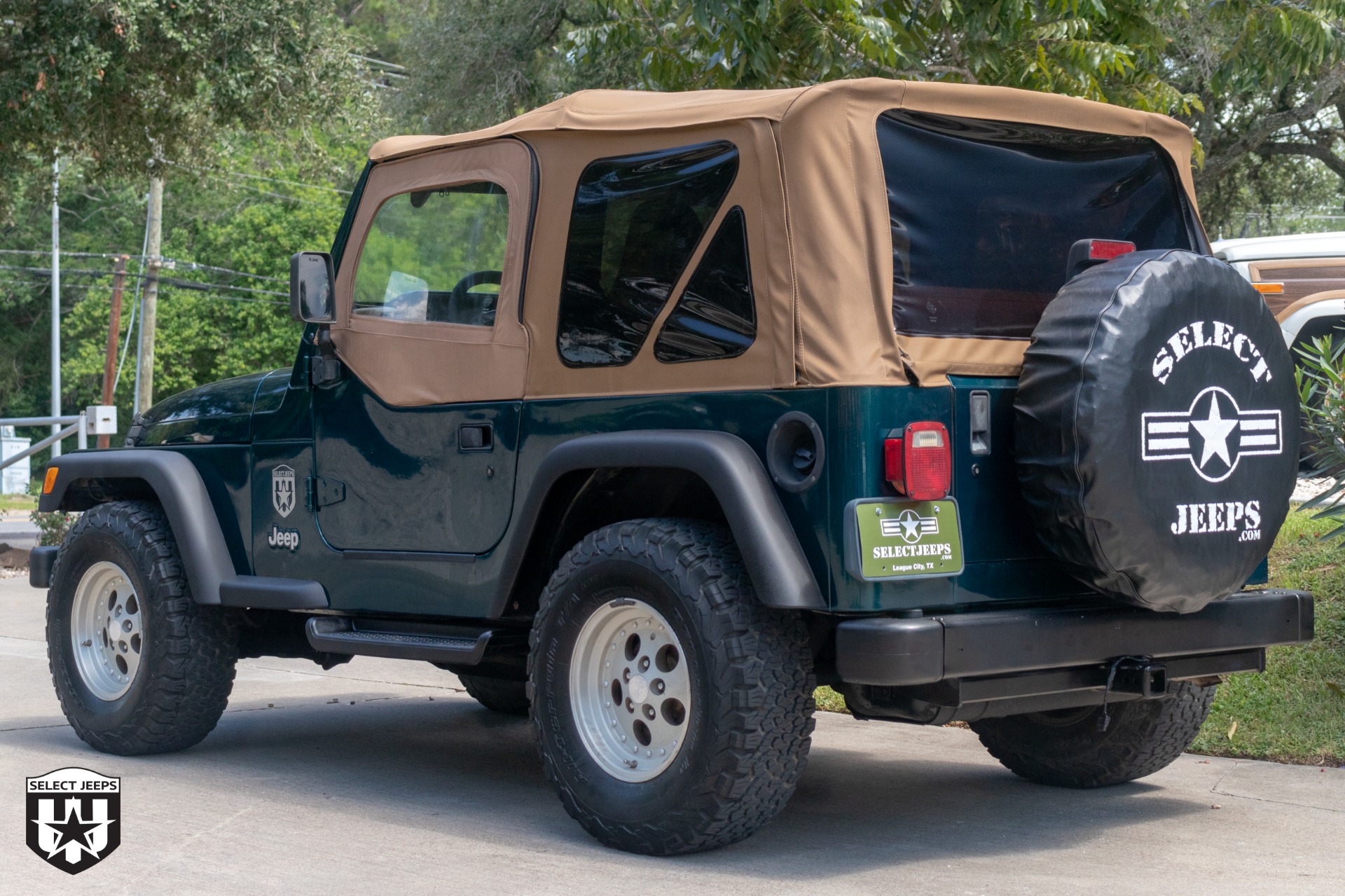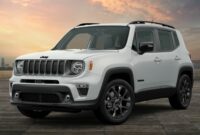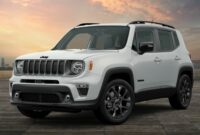Used 1997 Jeep Wrangler For Sale: Your Comprehensive Buying Guide sale.truckstrend.com
The allure of a Jeep Wrangler is undeniable. For decades, this iconic vehicle has symbolized freedom, adventure, and unparalleled off-road capability. Among its storied lineage, the 1997 Jeep Wrangler holds a special place. As the inaugural model year of the highly celebrated TJ generation, it marked a significant evolution for the brand, introducing coil spring suspension for a dramatically improved ride while retaining the rugged charm and go-anywhere spirit that defines a Jeep.
For many enthusiasts and first-time off-roaders, a used 1997 Jeep Wrangler for sale represents an accessible entry point into the world of authentic 4x4s. It offers a classic aesthetic, legendary durability, and an immense aftermarket support network, making it a fantastic choice for those seeking adventure without breaking the bank. This comprehensive guide will delve into everything you need to know when considering a used 1997 Jeep Wrangler, from its unique appeal to what to inspect before you buy.
Used 1997 Jeep Wrangler For Sale: Your Comprehensive Buying Guide
I. Why Choose a Used 1997 Jeep Wrangler? The TJ Generation’s Enduring Appeal
The 1997 model year heralded the arrival of the TJ generation, a pivotal moment in the Wrangler’s history. Moving away from the leaf-spring suspension of its YJ predecessor, the TJ adopted a coil-spring setup, a move that dramatically improved its on-road ride comfort and articulation off-road. This change, combined with its classic round headlights (a return from the YJ’s square lights), cemented its status as a beloved iteration.
Here’s why the 1997 TJ remains a top choice for used Jeep buyers:
- Improved Ride Quality: The coil-spring suspension provides a much smoother and more compliant ride than previous generations, making it more livable for daily driving.
- Classic Jeep Aesthetics: The TJ brought back the iconic round headlights, giving it a timeless and instantly recognizable look that appeals to purists.
- Legendary Off-Road Capability: Even in stock form, the 1997 Wrangler is incredibly capable off-road. Its compact size, short wheelbase, and robust 4×4 system allow it to tackle challenging trails with ease.
- Unmatched Customization: The aftermarket support for TJ Wranglers is arguably the largest of any vehicle. Lift kits, bumpers, winches, armor, and countless other modifications are readily available, allowing owners to tailor their Jeep to their exact needs and preferences.
- Strong Value Retention: Jeeps, especially Wranglers, tend to hold their value exceptionally well. A well-maintained 1997 TJ can be a solid investment that provides years of enjoyment.
- Simplicity and Durability: TJs are known for their relatively simple mechanicals, making them easier for DIY enthusiasts to work on and maintain. The inline-six 4.0L engine, in particular, is renowned for its longevity.
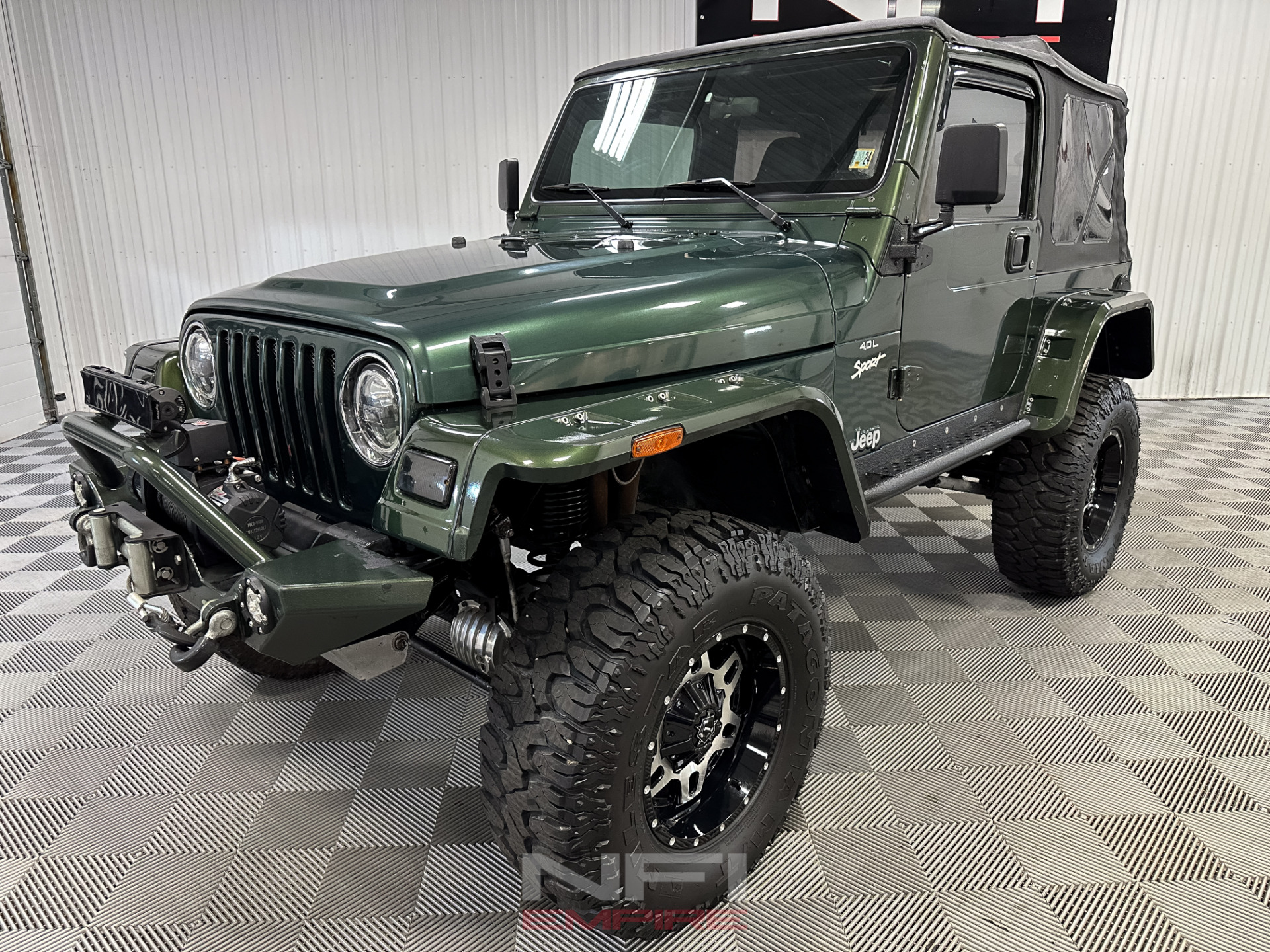
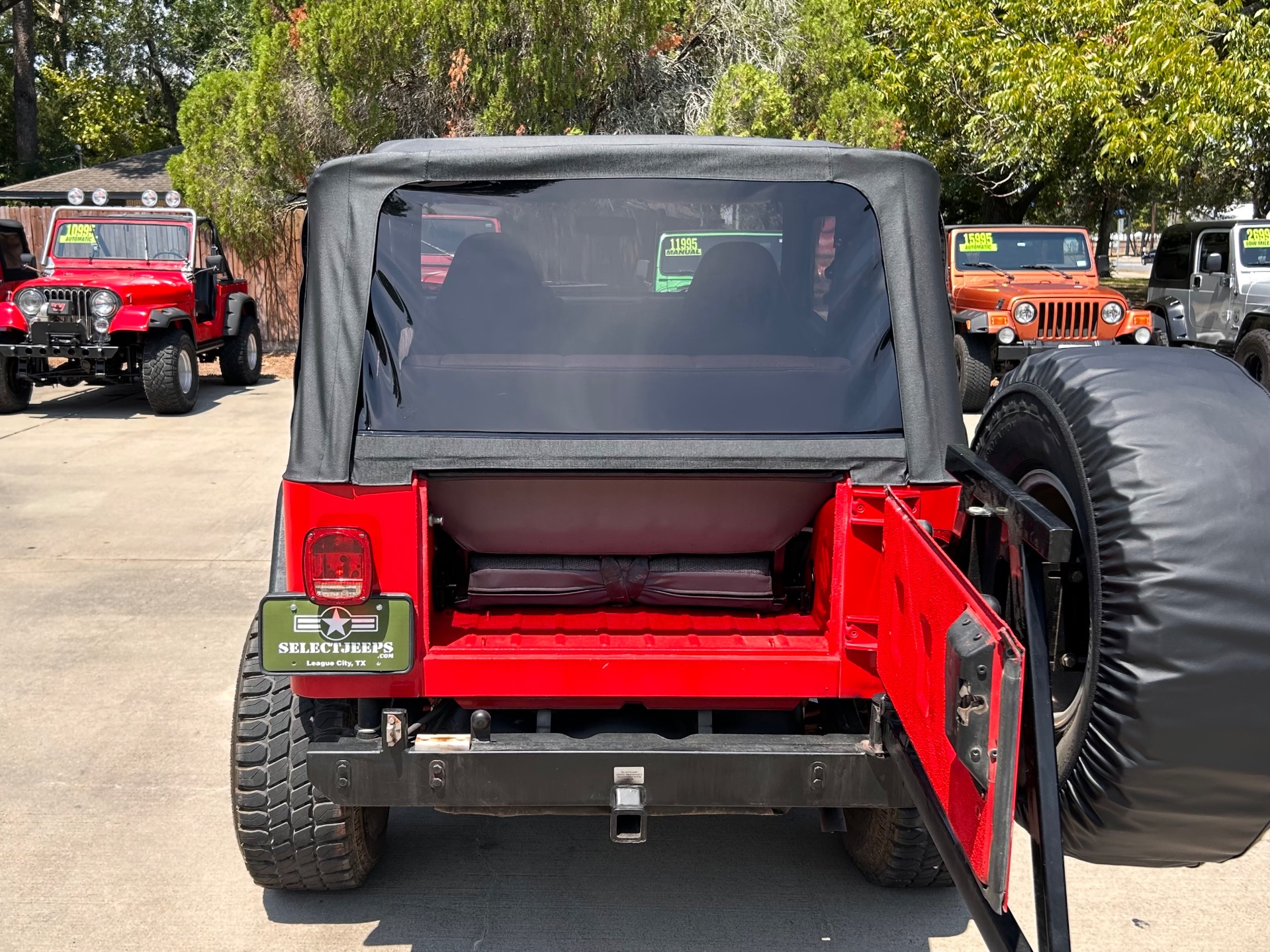
II. Key Features and Specifications of the 1997 Wrangler
Understanding the core components of the 1997 TJ is crucial for an informed purchase:
- Engines:
- 2.5L Inline-4 (120 hp, 140 lb-ft torque): Standard on the SE trim. Adequate for light duty and city driving, but can feel underpowered, especially with larger tires or when loaded.
- 4.0L Inline-6 (181 hp, 222 lb-ft torque): Optional on SE, standard on Sport and Sahara. This is the highly sought-after engine due to its legendary reliability, ample low-end torque, and better performance for both on-road and off-road applications. Highly recommended for most buyers.

- Transmissions:
- 5-Speed Manual (AX-5 for 2.5L, AX-15 for 4.0L): Common and offers direct engagement.
- 3-Speed Automatic (30RH for 2.5L, 32RH for 4.0L): A reliable, albeit somewhat dated, automatic option.
- Suspension: Quadra-Coil suspension (coil springs at all four corners) was the hallmark change, providing 8 inches of wheel travel.
- Axles:
- Front: Dana 30 (all trims).
- Rear: Dana 35 (SE, Sport) or Dana 44 (optional on Sport, standard on Sahara with automatic transmission). The Dana 44 is stronger and more desirable for serious off-roading.
- Transfer Case: Command-Trac NV231 part-time 4×4 system, a robust and reliable unit.
- Trim Levels:
- SE: Base model, typically with the 2.5L engine, basic features.
- Sport: Mid-range, often equipped with the 4.0L engine, larger tires, and more options.
- Sahara: Top-tier trim, offering premium cloth seats, body-color fender flares, fog lights, and often the 4.0L engine and Dana 44 rear axle.
- Body/Interior: Removable doors, fold-down windshield, and choice of soft top or hardtop (or both). The interior is functional and rugged, designed for easy cleaning.
III. What to Look For When Buying a Used 1997 Jeep Wrangler: A Buyer’s Checklist
Purchasing a nearly 30-year-old vehicle requires a thorough inspection. A 1997 Wrangler, while tough, is susceptible to specific issues.
- Rust (The #1 Killer): This is paramount. Jeeps, especially in areas where roads are salted, are prone to severe rust.
- Frame: Inspect the entire frame, paying close attention to the skid plate mounts, control arm mounts (especially lower rear), the area above the rear axle, and the rear cross member. Look for flaking, holes, or significant pitting. Tap with a hammer – if it sounds dull or breaks through, walk away.
- Body: Check rocker panels, floor pans (under the carpet), front fenders, rear quarter panels, and the tailgate (especially around the hinges and spare tire mount).
- Mounts: Check body mounts for rust and integrity.
- Engine (4.0L preferred):
- Leaks: Look for oil leaks (valve cover, oil filter adapter, rear main seal) and coolant leaks.
- Sounds: Listen for ticking (exhaust manifold crack is common), knocking, or excessive valvetrain noise.
- Maintenance: Ask for records. Check oil and coolant condition.
- Transmission & Transfer Case:
- Manual: Check for smooth shifts, clutch feel, and grinding.
- Automatic: Check fluid condition (should be red, not brown or burnt-smelling). Test all gears, including reverse.
- Transfer Case: Ensure 4-high and 4-low engage smoothly. Check for leaks around the seals.
- Drivetrain & Steering:
- U-Joints: Check driveshaft and axle U-joints for play or signs of rust/wear.
- Differentials: Look for leaks.
- Steering: Check for excessive play in the steering wheel. Inspect ball joints, tie rod ends, track bar, and steering box for looseness or leaks. This is critical for preventing "death wobble."
- Suspension:
- Shocks: Check for leaks or damage.
- Coil Springs: Look for broken coils or excessive sag.
- Bushings: Inspect control arm and sway bar bushings for cracks or wear.
- Brakes: Check pad thickness, rotor condition, and brake fluid level.
- Electrical: Test all lights, gauges, wipers, horn, and HVAC. Ensure windows (if power) work.
- Soft Top/Hardtop: Inspect condition for rips, tears, clear window clarity, and proper sealing. Check hardtop for cracks.
- Aftermarket Modifications: Be wary of poorly installed lifts, electrical modifications, or cheap parts. Quality modifications can add value; shoddy ones can indicate problems. Ask about the history of modifications.
- Test Drive: Drive at various speeds, including highway. Test 4WD in a safe area. Listen for unusual noises (clunks, hums, squeals). Pay attention to steering feel and brake performance.
IV. Common Issues and Solutions for 1997 TJs
While robust, 1997 TJs have a few common quirks and issues:
- Frame Rust: As mentioned, this is the biggest concern. Solutions range from minor patch repairs for small areas to full frame replacement for severe cases, which is very costly. Prevention through undercoating is key for healthy frames.
- "Death Wobble": A violent, uncontrollable shaking of the front end, usually occurring at highway speeds after hitting a bump. Not a single component failure, but a combination of worn steering and suspension components (track bar, ball joints, tie rod ends, control arm bushings, steering stabilizer). Solution: Diagnose and replace all worn components.
- Exhaust Manifold Cracks (4.0L): Very common, leading to a ticking sound, especially when cold. Solution: Replace with an aftermarket header or a factory manifold.
- Oil Leaks: The 4.0L is known for valve cover gasket, oil filter adapter, and rear main seal leaks. Solution: Gasket replacement.
- Cooling System: Old radiators, water pumps, and thermostats can fail. Solution: Regular flushes and replacement of components as they age.
- HVAC Blend Door: Can break, leading to no heat or only heat/cold on one side. Solution: Replacement of the blend door or its actuator.
- Tailgate Rust: Common around the spare tire carrier and hinges. Solution: Wire brush, rust converter, prime, and paint, or replace the tailgate.
V. Pricing and Valuation: How Much Should You Pay?
The price of a used 1997 Jeep Wrangler can vary wildly based on several factors:
- Condition: This is the primary driver. A rust-free, well-maintained example will command a premium.
- Engine: 4.0L models are significantly more valuable than 2.5L models.
- Mileage: Lower mileage typically means higher prices, but maintenance history is more crucial than just mileage alone for these older vehicles.
- Rust: A little surface rust is acceptable; structural rust is a deal-breaker or drastically reduces value.
- Aftermarket Modifications: Quality, desirable modifications (e.g., proper lift kit, good tires, winch, lockers) can increase value. Poorly done or extreme modifications can deter buyers or indicate abuse.
- Trim Level: Sahara models often fetch higher prices due to their features and the possibility of a Dana 44 rear axle.
- Location: Prices can vary regionally based on demand and local climate (e.g., less rust in dry climates).
Valuation Sources:
- Kelley Blue Book (KBB.com), Edmunds.com, NADA Guides: Provide general price ranges, but might not fully account for the "Jeep premium" or specific rust issues.
- Local Classifieds: Craigslist, Facebook Marketplace, Autotrader. See what similar Jeeps are selling for in your area.
- Jeep Forums/Enthusiast Sites: Often have "for sale" sections where prices reflect market value among enthusiasts.
Negotiation Tips:
- Be prepared to walk away if the price doesn’t match the condition.
- Point out any issues found during your inspection to negotiate the price down.
- Have cash or pre-approved financing ready.
Estimated Price Range for a Used 1997 Jeep Wrangler (Illustrative)
| Condition Category | Engine | Approximate Price Range (USD) | Notes |
|---|---|---|---|
| Poor | 2.5L | $3,000 – $5,000 | Significant rust, major mechanical issues, high mileage, likely needs extensive work. |
| 4.0L | $4,000 – $6,500 | Significant rust, major mechanical issues, high mileage, likely needs extensive work. | |
| Fair | 2.5L | $5,500 – $8,000 | Moderate rust, some mechanical issues or maintenance needed, average mileage. |
| 4.0L | $7,000 – $10,000 | Moderate rust, some mechanical issues or maintenance needed, average mileage. | |
| Good | 2.5L | $8,500 – $11,000 | Minor rust (surface only), well-maintained, lower mileage for age, minor cosmetic flaws. |
| 4.0L | $10,000 – $14,000+ | Minor rust (surface only), well-maintained, lower mileage for age, minor cosmetic flaws. | |
| Excellent | 4.0L | $15,000 – $20,000+ | Very little to no rust, meticulously maintained, low mileage, desirable modifications (if applicable), rare. |
Disclaimer: These are broad estimates. Actual prices depend heavily on specific vehicle condition, location, and market demand.
VI. Maintenance and Ownership Tips for Your Classic TJ
Once you’ve found your 1997 TJ, proper maintenance will ensure years of adventure:
- Rust Prevention: Regularly wash the undercarriage, especially if driving on salted roads. Consider applying rust inhibitors or undercoating. Address any new rust spots promptly.
- Fluid Changes: Adhere to regular oil changes, transmission fluid, transfer case fluid, and differential fluid changes.
- Grease U-Joints: Many TJs have greaseable U-joints. Keep them lubricated to prevent premature wear.
- Steering & Suspension Inspection: Periodically check all steering and suspension components for wear and tightness to prevent "death wobble."
- Cooling System: Monitor coolant levels and condition. Flush the system every few years.
- Tires: Rotate tires regularly and maintain proper pressure. Larger tires require re-gearing for optimal performance and fuel economy.
- Embrace DIY: Many routine maintenance tasks and common repairs on a TJ are straightforward, making it a great vehicle for learning basic mechanics. Join online forums for guidance.
- Join the Community: The Jeep community is vast and supportive. Local clubs and online forums are invaluable resources for advice, parts, and camaraderie.
Frequently Asked Questions (FAQ)
Q1: Is the 1997 TJ a good daily driver?
A1: Compared to previous Wranglers, yes, due to the coil-spring suspension. However, it’s still a rugged, short-wheelbase SUV. Expect a firm ride, higher noise levels than modern cars, and less fuel efficiency. For someone who appreciates the Jeep experience, it can be a great daily driver; for others, it might be too raw.
Q2: What’s the best engine, the 2.5L or 4.0L?
A2: The 4.0L inline-six is overwhelmingly preferred. It offers significantly more power and torque, better reliability, and is generally more desirable, leading to higher resale values. The 2.5L is adequate for light use but can struggle, especially with larger tires or highway driving.
Q3: How much does insurance cost for a 1997 Wrangler?
A3: Insurance costs vary greatly based on your location, driving record, and chosen coverage. As an older vehicle, comprehensive and collision might be cheaper than for a new car, but liability remains dependent on the driver. Get quotes from multiple providers.
Q4: Are parts hard to find for a 1997 TJ?
A4: No, quite the opposite! The TJ generation is extremely popular, and parts (both OEM and aftermarket) are widely available. You’ll find everything from basic maintenance items to highly specialized off-road components.
Q5: What’s the "death wobble" and how do I fix it?
A5: Death wobble is a terrifying, violent oscillation of the front axle, usually triggered by hitting a bump at speed. It’s caused by a combination of worn steering and suspension components (track bar, tie rods, ball joints, control arm bushings). The fix involves systematically inspecting and replacing all worn parts. A steering stabilizer can mask the problem but doesn’t fix the underlying cause.
Q6: Can I easily remove the doors and top?
A6: Yes! This is one of the quintessential Wrangler experiences. The soft top can be folded down or removed, and the hardtop can be unbolted and lifted off (requires two people). The doors unbolt and lift off quickly, but be aware that driving without doors may be illegal in some states or require specific mirror setups.
Conclusion
The 1997 Jeep Wrangler, as the vanguard of the TJ generation, offers a compelling blend of classic Jeep character and improved modern comforts. It stands as a testament to rugged capability and enduring appeal, making it an excellent choice for adventurers, off-road enthusiasts, and anyone seeking a vehicle with a distinct personality.
While the prospect of owning a vintage 4×4 is exciting, a thorough inspection, particularly for rust and critical mechanical components, is paramount. By understanding its common issues and knowing what to look for, you can make an informed decision and potentially secure a truly rewarding vehicle. With proper care and a passion for adventure, a used 1997 Jeep Wrangler for sale isn’t just a purchase; it’s an invitation to a lifestyle of open-air freedom and limitless exploration.
